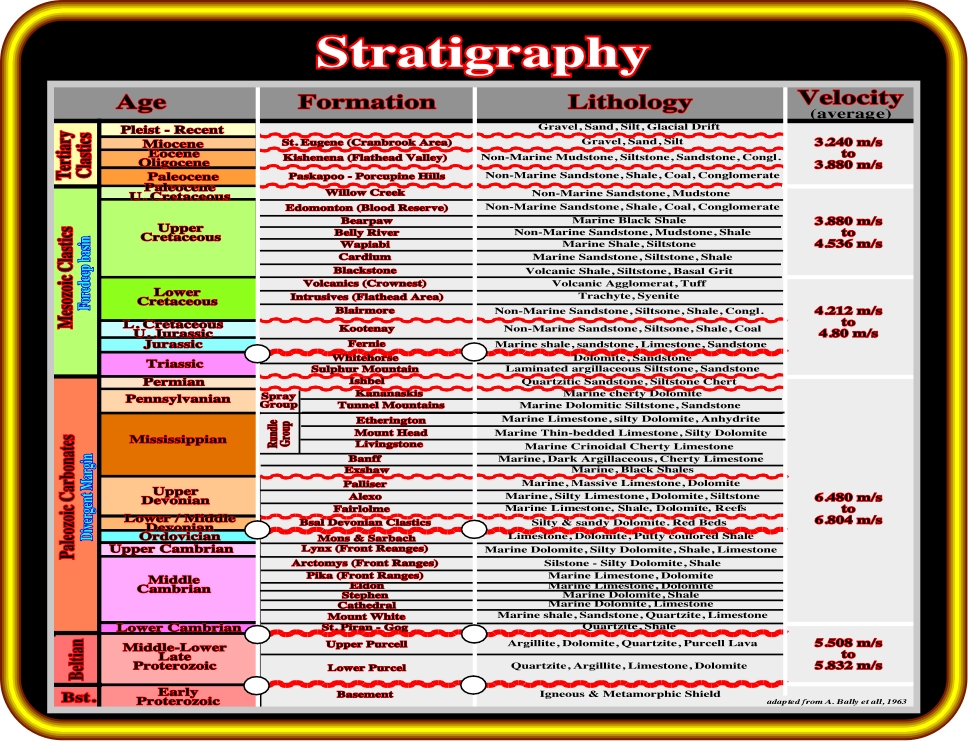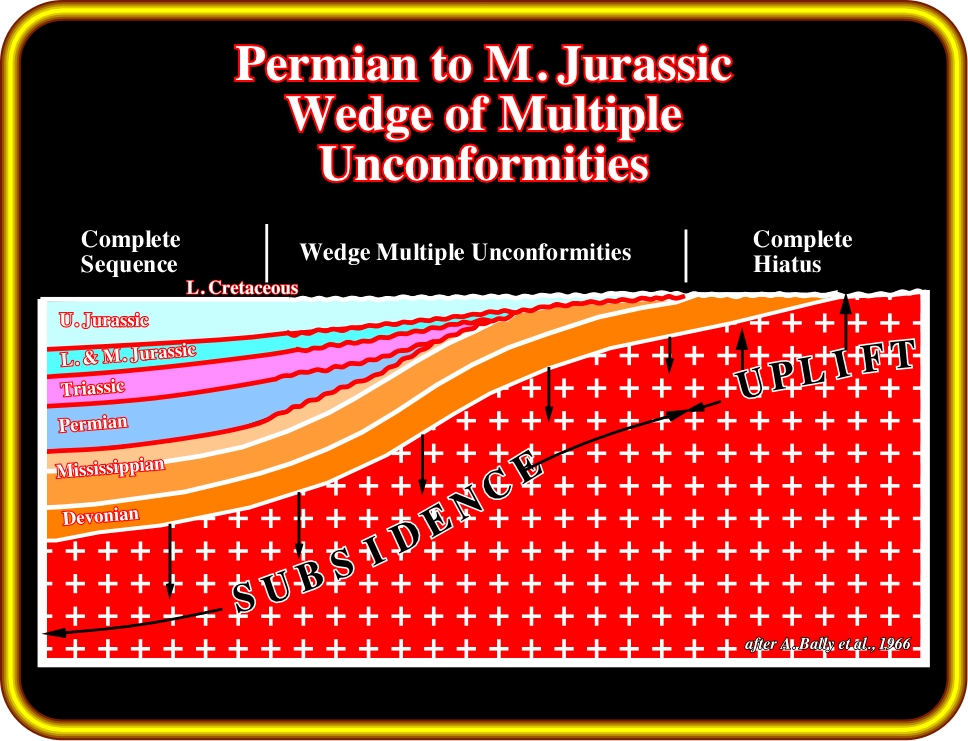
Universidade Fernando Pessoa
Porto, Portugal

Geological Setting & Seismic Interpretation

Plate 15 - The stratigraphic column is broken into five units by four major unconformities, one within the Proterozoic and the others respectively at the bases of the Cambrian, Devonian and Jurassic. The lowest part of the exposed column is the Proterozoic Purcell Series. It is primarily quartzite and argillites with few carbonates in the upper part. The series thins rapidly eastward. The Proterozoic Windermere clastic succession unconformably overlies the Purcell. Between the top of the Proterozoic and the base of the Upper Devonian are two distinctly different successions. In the south, there is only a thin Cambrian (limestones and shales) In the north, thick Silurian, Ordovician and Cambrian beds occur. The overlying units are primarily carbonates in the east with abrupt facies change to shales in the west. The Mississippian and the Upper Devonian are remarkably uniform shelf carbonates. The Jurassic to Paleocene rocks are a clastic succession of thick coarse sand wedges in the west giving way eastward to marine sands. Because the stratigraphic strike is roughly parallel to the structural strike, there is a remarkable North-South continuity of individual formations.
A) Permian to Middle Jurassic
This interval is the realm of a “wedge of multiple unconformities”. The term “wedge of multiple unconformities” refers to the phenomenon of one major unconformity branching into wedges of lesser or shorter stratigraphic intervals and minor unconformities (plate below). This wedge underlines the beginning of a flexural subsidence, i.e. a tilting movement with an uplift in the east and a subsidence in the west, which characterizes the foredeep basin. The sediments predating such a subsidence are generally isopachs and subcrop eastward in the realm of a complete hiatus.

Plate 16 - As in the majority of the foredeep basins, there is a Permian to Upper Jurassic wedge of multiple unconformities between the craton and the deep basin, i.e. seaward of the peripheral anomaly.
B) Upper Jurassic
This interval can be viewed as part of the preceding wedge of multiple unconformities because it wedges out in the Plains and appears to be bounded by two unconformities in the Foothills and Plains.
C) Lower Cretaceous
This interval is essentially transgressive and composed mainly of alluvial and deltaic coarse clastic sediments. In the southern Foothills and Front ranges, the top of the Lower Cretaceous is marked by the Crowsnest volcanics.
D) Upper Cretaceous
The base of the Upper Cretaceous marks the climax of the transgression that started in Late Jurassic and roughly coincides with the worldwide Cenomanian transgression.
Only during the Late Cretaceous (Campanian-Maestrichtian) do we recognize a widespread regression with a westward sourcing. During late Cretaceous time minor coarse clastic rocks were deposited in the area. Later, the deposition of sandstones resumed in the southern foothills, as shown by thick alluvial sequences of Belly River and Edmonton strata.
E) Paleocene
Although Paleocene clastic rocks could be grouped with the Upper Cretaceous because they mark the climax of the regressive phase, they deserve special attention since they can be used to date the structural events. Paleocene beds are involved in the deformation of the Foothills.
However, in the southern Foothills an erosional unconformity separates the uppermost Cretaceous-Paleocene (Willow Creek Formation) from the Paleocene (Porcupine Formation) which does not appear to be involved in the Foothills deformation.